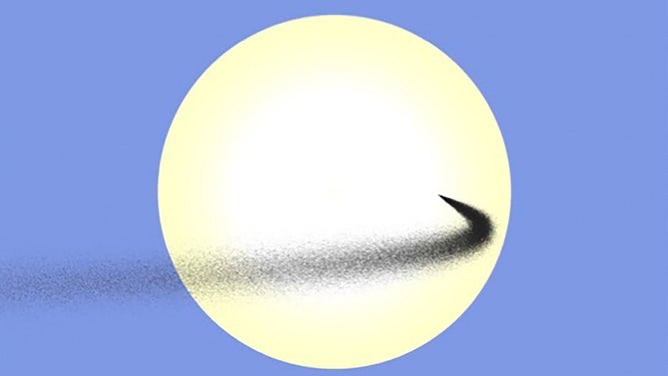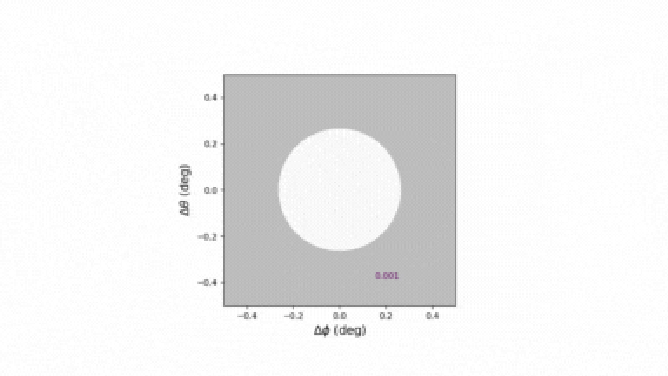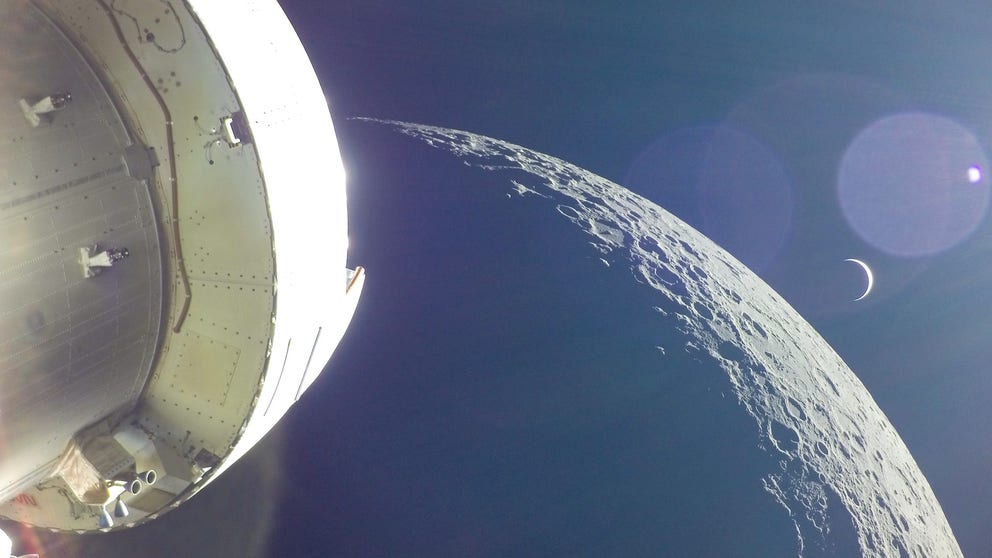Study: Moon dust could help reduce solar radiation to mitigate climate change impacts
Scientists at the University of Utah explored the potential of using the lunar particles to shield sunlight before it reaches our planet.
Watch Orion's breathtaking final journey around the moon before heading back to Earth
After Orion completed its final lunar flyby, the spacecraft fired up its engines to set it on course for its return journey back to Earth.
A recent study suggests that moon dust might help slow the rise in Earth’s temperature caused by climate change.
Scientists at the University of Utah explored the potential of using the lunar particles to shield sunlight before it reaches our planet.
For decades, researchers have considered using screens, objects or dust particles to block just enough of the sun’s radiation – between 1% and 2% – to mitigate the effects of global warming, a journal published Wednesday in PLOS Climate stated. Now, they have analyzed different properties of dust particles, quantities of dust and the orbits that would be best suited for shading Earth.
Ben Bromley, professor of physics and astronomy and lead author of the study, joined a team of astronomers who applied a technique to study planet formation around distant stars.
LOOK OUT FOR THESE ASTRONOMICAL EVENTS IN FEBRUARY

Simulated stream of dust launched between Earth and the sun. This dust cloud is shown as it crosses the disk of the sun, viewed from Earth. Streams like this one, including those launched from the moon’s surface, can act as a temporary sunshade.
(Ben Bromley/University of Utah)
Planet formation is a "messy process that kicks up lots of astronomical dust that can form rings around the host star," the journal stated.
"These rings intercept light from the central star and re-radiate it in a way that we can detect it on Earth," the journal added. "One way to discover stars that are forming new planets is to look for these dusty rings."
That was the seed of the idea, according to Bromley.
"If we took a small amount of material and put it on a special orbit between the Earth and the sun and broke it up, we could block out a lot of sunlight with a little amount of mass," he said.
There were two scenarios promising to scientists.
WHAT CAUSED THIS COLORFUL HALO AROUND THE MOON?

A simulation from dust launched from the way station at Lagrange point 1. The shadow cast on Earth is exaggerated for clarity.
(University of Utah)
The authors found that launching dust from Earth to a way station at the Lagrange point 1 (L1) between Earth and the sun would be most effective but would require astronomical cost and effort. According to the study's authors, L1 is the closest point between Earth and the sun where the gravitational forces are balanced.
"It was rather difficult to get the shield to stay at L1 long enough to cast a meaningful shadow," said Sameer Khan, an undergraduate student and the study’s co-author. "This shouldn’t come as a surprise, though, since L1 is an unstable equilibrium point. Even the slightest deviation in the sunshield’s orbit can cause it to rapidly drift out of place, so our simulations had to be extremely precise."
'BEAR' ON MARS CAPTURES INTERNET'S IMAGINATION
An alternative is to launch dust from our moon as a cheap and effective way to shade the Earth.
"We aren’t experts in climate change, or the rocket science needed to move mass from one place to the other," Bromley said. "We’re just exploring different kinds of dust on a variety of orbits to see how effective this approach might be. We do not want to miss a game changer for such a critical problem."
